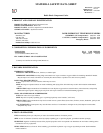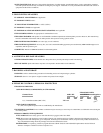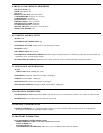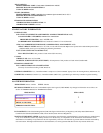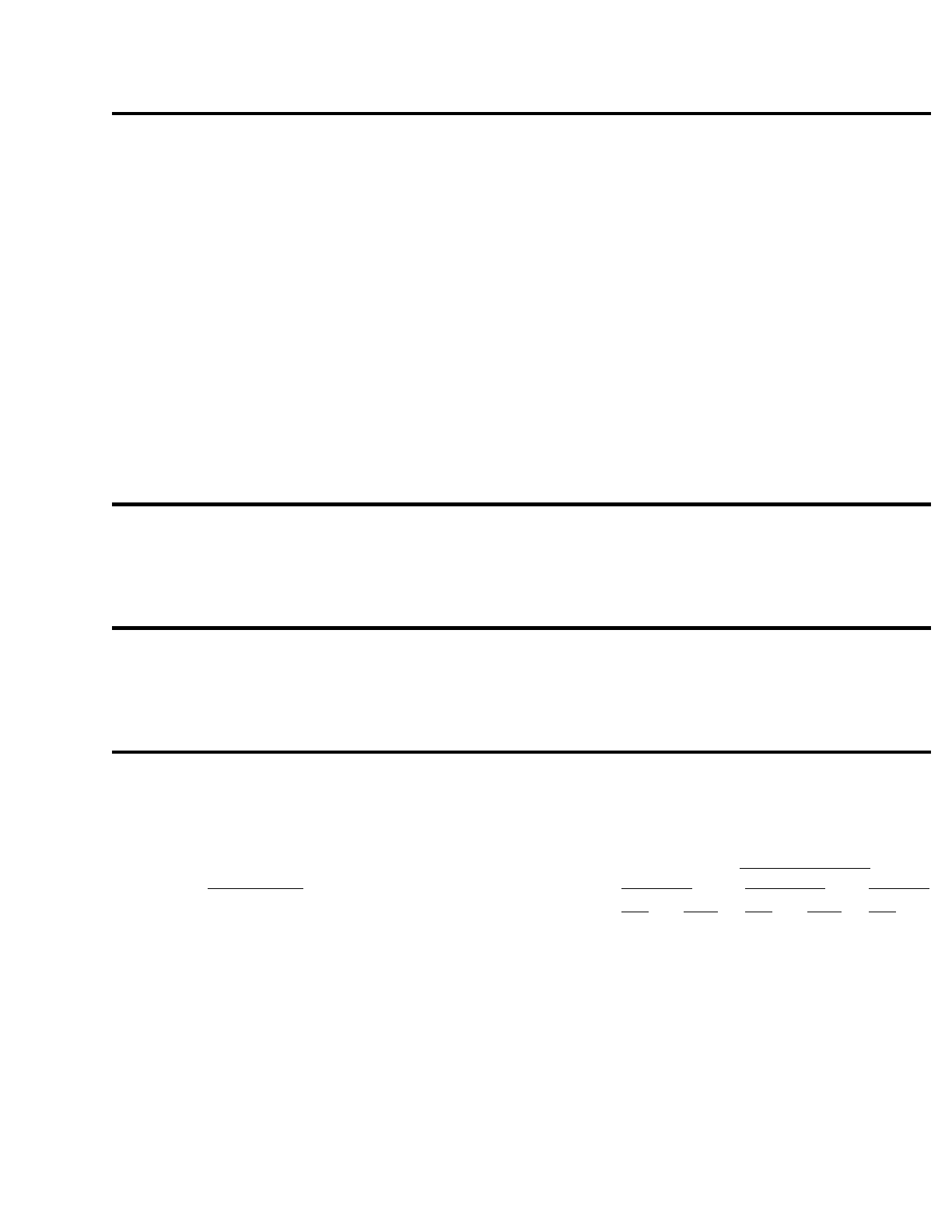
NOTES TO PHYSICIAN:
Because of the possible disturbances of cardiac rhythm, catecholamine drugs, such as epinephrine, should be
used with special caution and only in situations of emergency life support. Treatment of overexposure should be directed at the control of
symptoms and the clinical conditions.
5. FIRE FIGHTING MEASURES
FLASHPOINT AND METHOD:
Not Applicable
FLAMMABLE LIMITS:
None*
AUTOIGNITION TEMPERATURE:
> 750°C (1382°F)
FLAMMABLE CLASS:
Not Applicable
FLAME PROPAGATION OR BURNING RATE OF SOLIDS:
Not Applicable
EXTINGUISHING MEDIA:
As appropriate for combustibles in area.
EXPLOSION HAZARDS:
This product is not flammable at ambient temperatures and atmospheric pressure. However, this material may
become combustible when mixed with air under pressure and exposed to strong ignition sources.
FIRE FIGHTING PROCEDURES:
Use water spray to cool containers.
FIRE FIGHTING EQUIPMENT:
As in any fire, wear self-contained breathing apparatus pressure-demand, (MSHA/NIOSH approved or
equivalent) and full protective gear.
COMMENTS:
*Based on ASHRAE Standard 34 with match ignition.
6. ACCIDENTAL RELEASE MEASURES
GENERAL PROCEDURES:
Isolate hazard area. Keep unnecessary and unprotected personnel from entering.
RELEASE NOTES:
Spills and releases may have to be reported to Federal and/or local authorities.
7. HANDLING AND STORAGE
HANDLING:
Follow standard safety precautions for handling and use of compressed gas cylinders.
STORAGE:
Store in a cool place in original container and protect from sunlight.
8. EXPOSURE CONTROLS / PERSONAL PROTECTION
EXPOSURE GUIDELINES:
OSHA HAZARDOUS COMPONENTS (29 CFR 1910.1200)
OSHA TABLE COMMENTS:
1.
* (AEL)=Acceptable Exposure Limit as established by the manufacture
ENGINEERING CONTROLS:
Local exhaust ventilation may be necessary to control any air contaminants to within their TLVs during the
use of this product.
PERSONAL PROTECTIVE EQUIPMENT
EYES AND FACE:
Wear safety glasses with side shields (or goggles) and a face shield.
SKIN:
Skin contact with liquid may cause frostbite. General work clothing and gloves (leather) should provide adequate protection. If
prolonged contact with the liquid or gas is anticipated, insulated gloves constructed of PVA, neoprene or butyl rubber should be used.
Any contaminated clothing should be promptly removed and washed before reuse.
RESPIRATORY:
A respiratory protection program that meets OSHA 1910.134 and ANSI Z88.2 requirements must be followed
whenever work
p
lace conditions warrant a res
p
irator's use.
EXPOSURE LIMITS
Chemical Name OSHA PEL ACGIH TLV Supplier
O
ppm
mg/m
3
ppm mg/m
3
ppm
1,1,1,2-Tetrafluoroethane (HFC-134a)
TWA
NE NE
1,000
ppm
[1]



